Description
In this project, you will implement a basic ray tracer.
Code
Skeleton code is available here.
This code contains a number of files, including.
- Makefile
- Source files: *.h, *.cpp
- Test files: *.txt
The methods that you need to implement are marked with 'TODO' in the code.
These can be found in boolean.cpp, camera.cpp, phong_shader.cpp, plane.cpp, reflective_shader.cpp, render_world.cpp, and sphere.cpp.
A code skeleton and driver framework is provided.
You will need to implement object intersections, shading, and ray casting.
To run the tests, run ./ray_tracer <test-file>, where test-file is one of the provided test files.
The tests can also be run with ./ray_tracer -p <test-file>, in which case the result is saved to output.png rather than rendered to the screen using OpenGL.
The tests are designed to be implemented and debugged in order and are intended to help you debug your implementation.
They will also be used for grading.
The code contains many comments explaining what needs to be done and what functions should do.
Be sure to read through the code and comments before you begin implementing things.
Submission Instructions
You will submit your code as one file in one of these formats: tar, tar.gz, tar.bz2, or zip.
Your submission should contain:
- boolean.cpp, camera.cpp, phong_shader.cpp, plane.cpp, reflective_shader.cpp, render_world.cpp, and sphere.cpp
- If you are not doing extra credit, All other files will be ignored.
-
If you are doing extra credit, you will probably need to include additional files.
You will need to submit enough files so that we will be able to run your tests.
For example,
- Documentation: extra-notes.txt
- Code: any files you added (cone.h, cone.cpp, ...) or modified (parse.cpp, ...)
- Test cases: extra-01.txt, extra-02.txt, ...
- Textures: extra-01.png, ...
Extra Credit
Here are some ideas for extra credit:
- Texture mapping. Turn a sphere into a globe.
- Environment mapping. Include a background image for the environment (e.g., a sky with clouds). Include a reflective object so we can see a reflection of the environment in the scene.
- Transparent objects. Implement refraction and the Fresnel equations.
- More primitives. Add cone and torus to the list of primitive geometry types.
- Antialiasing.
You may also suggest another option by contacting the professor (by email or in office hours).
In any case, you will need to explain briefly what you have done and how you did it (extra-notes.txt).
The presence of extra-notes.txt indicates that extra credit has been done.
For each file you add, briefly explain its purpose.
For each file you modified, briefly explain why it was modified.
Indicate which test cases are included, how to run them, and what we should see.
No credit will be given for extra credit that is not demonstrated with at least two test cases, one of which should be nontrivial and challenging.
Extra credit up to 10% of the total value of the project is possible.
Changes made for extra credit should not alter the behavior of the original test cases.
Grading script
As with the first project, we are providing you with the grading script that we will be using to grade this project.
You can run it like this: "./grading-script.sh .".
The script works in the same way in the first project, although there are no timing tests with this project.
There is a 10 second time limit on each test; this should be more than enough time for the tests provided.
Be sure to test your project on one of the delta machines.
Note that extra credit projects will vary from student to student and are not graded using the script.
These will be graded individually.
Checkpoints
This project has one checkpoint.
Checkpoints are intended to encourage you to start your project early.
At each checkpoint, you will submit your project just as you would when it is due.
At the first checkpoint, your program will be graded out of 30 points.
No extra credit is possible at checkpoints.
When your project is due, it will be graded out of 50 points, and extra credit will be given for scores higher than that.
Test cases
The table below documents the tests.
Along with a thumbnail showing what the result should look like, I make some potentially helpful notes about the test case.
Click the thumbnail for a full-size image.
| Thumbnail |
Notes |
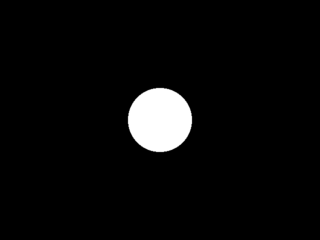 |
00.txt
5 points
pixel trace
Bare minimum to getting started: flat shading, sphere intersections, casting rays.
|
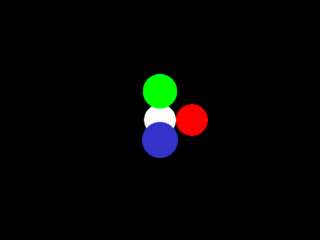 |
01.txt
5 points
Get the coordinate system oriented correctly, introduce colors.
|
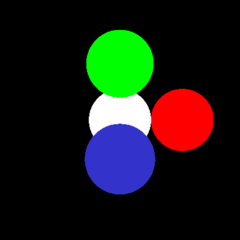 |
02.txt
1 points
Test image size and camera settings.
|
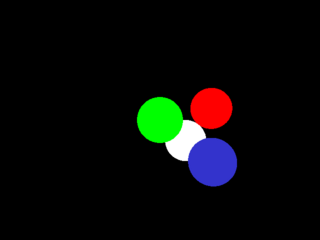 |
03.txt
1 points
pixel trace
Test irregular camera orientation.
|
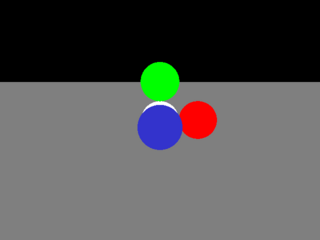 |
04.txt
1 points
Get basic plane intersections working.
|
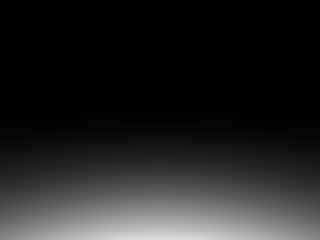 |
05.txt
1 points
pixel trace
Add Phong shading (diffuse only) and handle point lights.
|
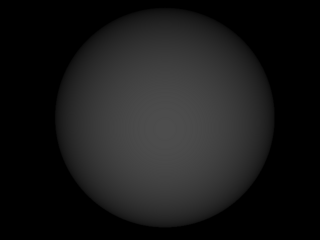 |
06.txt
1 points
pixel trace
Phong shading with sphere - diffuse only.
|
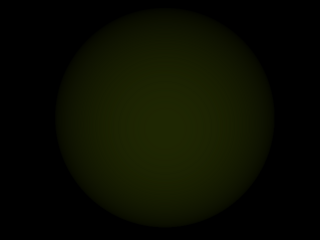 |
07.txt
1 points
Phong shading colored material and colored light. Diffuse only.
|
 |
08.txt
1 points
pixel trace
Add specular.
|
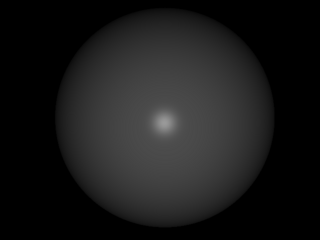 |
09.txt
1 points
pixel trace
Both diffuse and specular.
|
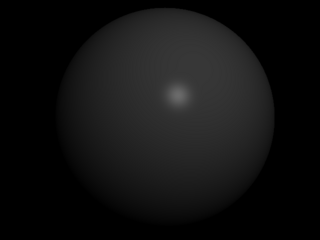 |
10.txt
1 points
pixel trace
Move light off center; break symmetry.
|
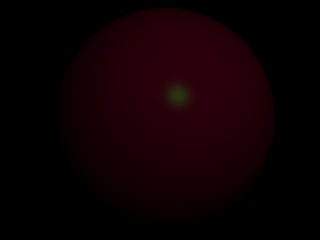 |
11.txt
1 points
Colors with lights, diffuse, and specular.
|
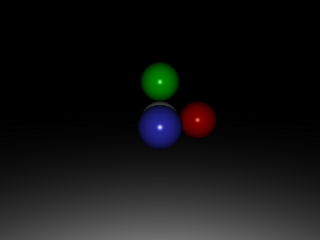 |
12.txt
1 points
Phong shading with full scene.
|
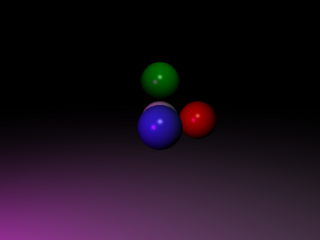 |
13.txt
1 points
Add color to the lights; make sure things work with two lights.
|
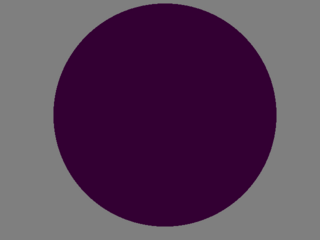 |
14.txt
1 points
Add background shader, introduce ambient light.
|
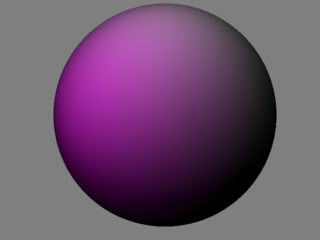 |
15.txt
1 points
Shading test.
|
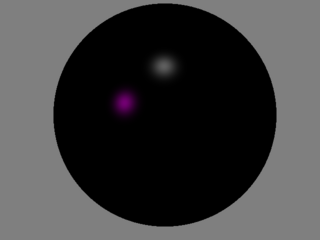 |
16.txt
1 points
Specular shading test - test exponent.
|
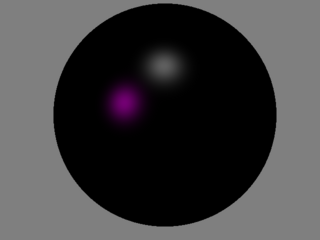 |
17.txt
1 points
Specular shading test - test exponent.
|
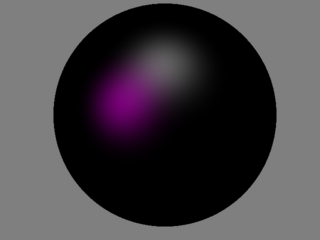 |
18.txt
1 points
Specular shading test - test exponent.
|
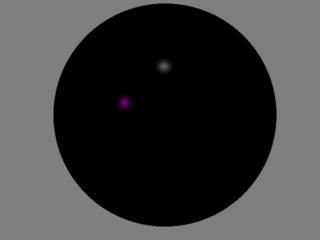 |
19.txt
1 points
Specular shading test - test exponent.
|
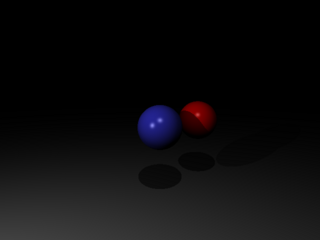 |
20.txt
5 points
pixel trace
Introduce basic shadows. This is also a bug test; there is a very bright light hidden under the ground.
|
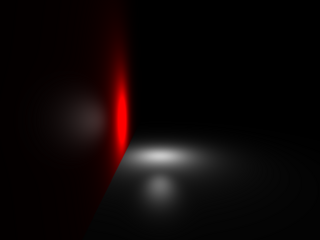 |
21.txt
1 points
Bug test: objects behind the light.
|
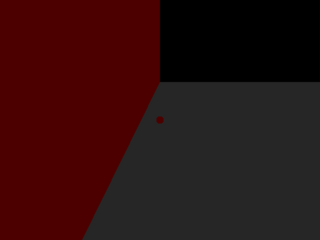 |
22.txt
1 points
Bug test: object covering up the light. Since no light escapes, the image should only contain ambient light.
|
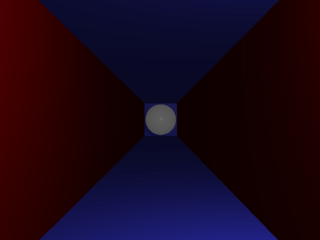 |
23.txt
1 points
pixel trace
Test recursion depth.
|
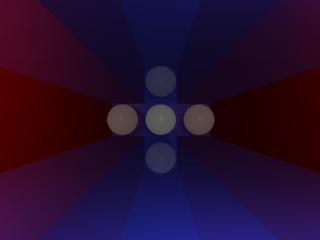 |
24.txt
1 points
Test recursion depth.
|
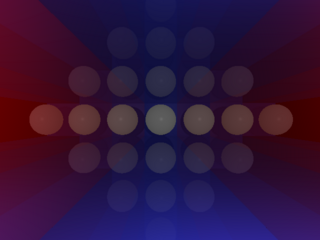 |
25.txt
1 points
Test recursion depth.
|
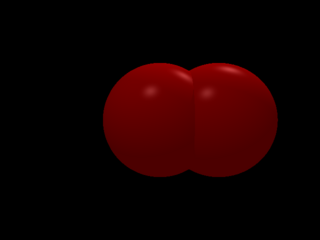 |
26.txt
1 points
pixel trace
Start implementing Booleans: basic union.
|
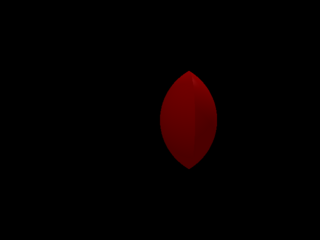 |
27.txt
1 points
Start implementing Booleans: basic intersection.
|
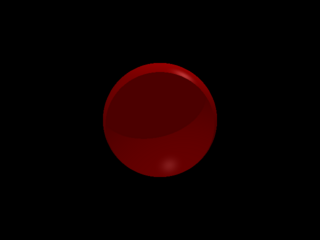 |
28.txt
1 points
pixel trace
Start implementing Booleans: basic difference. Check to make sure that complex objects can cast shadows on themselves.
|
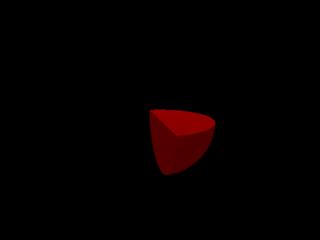 |
29.txt
1 points
Handle nesting of Booleans.
|
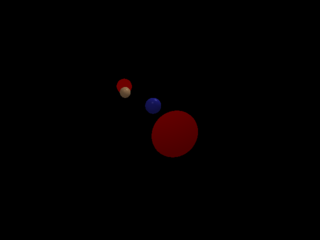 |
30.txt
1 points
pixel trace
Bug test: check complex interaction of Booleans.
|
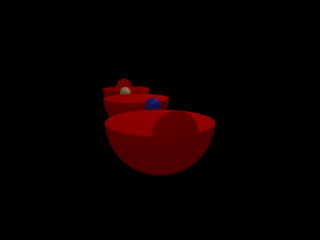 |
31.txt
1 points
pixel trace
Bug test: check complex interaction of Booleans.
|
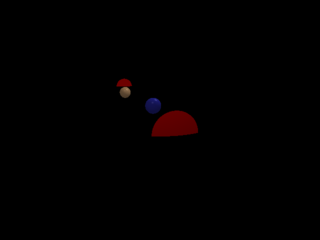 |
32.txt
1 points
pixel trace
Bug test: check complex interaction of Booleans.
|
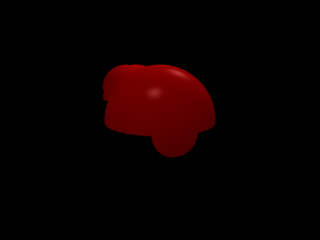 |
33.txt
1 points
pixel trace
Bug test: check complex interaction of Booleans.
|
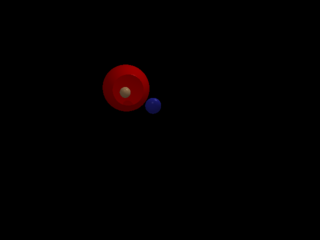 |
34.txt
1 points
pixel trace
Bug test: check complex interaction of Booleans.
|
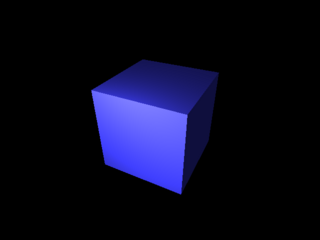 |
35.txt
1 points
Construct a bounded object from unbounded primitives.
|
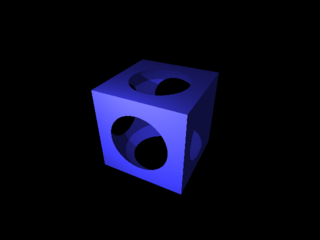 |
36.txt
1 points
pixel trace
Complex Booleans and self-shadowing.
|
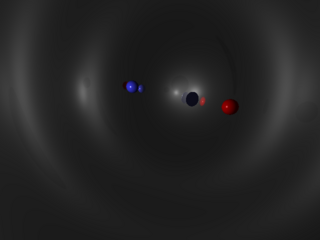 |
37.txt
1 points
pixel trace
Bug test: what happens if we construct a hollow piece of geometry and fill it with a camera, lights, and objects?
|





































